- Home
- J. T. Edson
The Floating Outfit 35
The Floating Outfit 35 Read online
To be made welcome at the town called Hell in the Palo Duro, a man had to have a price on his head and be willing to share his loot with the mayor. If he did, he would be safe from the law. By arrangement with their chief, the Kweharehnuh Comanches protected Hell and kept away unwanted visitors.
Being determined to wipe out the outlaws’ stronghold, but wishing to avoid starting an Indian war, the Governor of Texas asked a friend for help. So Ole Devil Hardin’s floating outfit set off on another dangerous assignment. Not only did Dusty Fog, the Ysabel Kid and Waco have to get by the Kweharehnuh, they had to try to stay alive once they reached the town called Hell.
THE FLOATING OUTFIT 35: HELL IN THE PALO DURO
By J. T. Edson
First published by Corgi Books in 1971
Copyright © 1971, 2019 by J. T. Edson
First Digital Edition: May 2019
Names, characters and incidents in this book are fictional, and any resemblance to actual events, locales, organizations, or persons living or dead is purely coincidental. All rights reserved. No part of this book may be reproduced or transmitted in any form or by any means, electronic or mechanical, including photocopying, recording or by any information or storage and retrieval system, without the written permission of the author, except where permitted by law.
This is a Piccadilly Publishing Book
Series Editor: Ben Bridges
Text © Piccadilly Publishing
Published by Arrangement with the Author’s Agent.
For everybody who attended the 1970 Corgi Books Salesman of the Year dinner. In the sincere hope that your hangovers were as bad as mine.
Publisher’s Note:
As with other books in this series, the author uses characters’ native dialect to bring that person to life. Whether they speak French, Irish, American English or English itself, he uses vernacular language to impart this.
Therefore when Scottish characters use words such as “richt” instead of “right”; “laird” for “lord”; “oopstairs” for “upstairs”; “haim” for “home”; “ain” for “own”; “gude sores” for “good sirs” and “wha” for “who” plus many other phrases, please bear in mind that these are not spelling/OCR mistakes.
Chapter One – Don’t Come After Me
The Ysabel Kid, Waco and Sheriff Ian Laurie agreed that there were several puzzling aspects about the way in which the Glover gang had been acting since robbing the bank in Wichita Falls.
It was not so much the fact that Andy Glover had quit his normal hunting grounds in Eastern Texas. Having received orders from Governor Stanton Howard, the Texas Rangers had launched a vigorous campaign to stamp out the lawlessness which was flourishing m the Lone Star State. Naturally the owlhoots in the more civilized eastern counties were the first to feel the pressure.
Nor was there too much of a surprise in discovering that, having brought off a successful robbery for the loss of one man, the gang did not cover the twenty or so miles to the Red River to cross into the Indian Nations. Working in conjunction with the Texas Rangers, the Army and U.S. marshals planned to run out the outlaws who had settled in that territory.
Having learned of that policy, which had not been kept a secret, Andy Glover might have decided that Indian Nations no longer afforded a safe refuge. Yet, on the face of it, neither did the route he and his men had been following for the past three days.
During the gang’s flight from Wichita Falls, the Kid had shot and wounded one of them. Questioned about his companions’ destination, the dying outlaw had replied to the effect that they were going to hell in the Palo Duro. He had died before he could clarify the statement. At first, the sheriff of Wichita County had regarded the words as a lie designed to send his posse off in the wrong direction, or the deranged utterings of a man in mortal pain. All the evidence now pointed to Billy Robinson having told the truth.
There had been some debate on the first afternoon of the hunt about whether the posse should make camp on the gang’s trail at sundown, or head for the Red River and search out Glover’s crossing point in the morning. Accepting the Ysabel Kid’s suggestion, Laurie had decided to make camp. It had proved to be the correct decision.
Soon after moving off the next morning, the posse had found that the gang’s tracks veered sharply to the west. Using the old cavalry technique of riding for an hour at a fast trot, then halting, removing the saddles and allowing the horses to roll, graze and relax for fifteen minutes, they were able to make better time than the outlaws. Slowly, but surely, they were closing the distance between them and the Glover gang.
Continuing the process of riding and halting until some of the horses were too tired to roll, the posse had reached the Pease River about twenty miles above its junction with the Red by nightfall. They had been in the vicinity of the Box V ranch house and Laurie had sent men in search of information and fresh horses to keep up their rapid pace.
The gang had swung well clear of the ranch, but returned to the river and kept going upstream. On reaching the point where the North Pease—as it had become—swung sharply to the south-west, the gang had gone north.
Making good time, the posse had tracked their quarry across what would one day become Hall and Briscoe Counties to the Red River’s Prairie Dog Town Fork. On crossing over, they had discovered that the gang had once more headed west. That appeared to rule out the possibility of Glover returning to the Indian Nations after having laid a long, false trail. It could also mean that he had selected his route in the hope of bluffing the posse into turning back.
On coming to the junction of the Swisher Creek and the Prairie Dog Town Fork, Laurie had once more sought information and fresh mounts. Each had been found at Dan Torrant’s Lazy T ranch. According to Torrant, there had been no sign of the outlaws near his house. However, one of his men had claimed to have seen signal smoke to the west. Torrant was of the opinion that the gang would turn back once they had become aware of it.
Sheriff Laurie had faced a difficult decision. Although he wanted to take back the gang and its loot, he felt himself responsible for the lives of his posse. In addition to the Ysabel Kid and Waco, he had along his brash, hotheaded young deputy, Eric Narrow, and four citizens. Skilled fighting men, the latter quartet each had a family in Wichita Falls. So Laurie had wondered if he was justified in taking them into the Palo Duro country.
While the other Comanche bands had made peace a few years earlier, due in some part to the Ysabel Kid’s efforts, 1 the Kweharehnuh, Antelope, band had refused to do so. Returning to the wild, virtually unexplored canyons, draws and hillocks of the Tule and Palo Duro country, they had continued to live in the traditional Nemenuh 2 manner and were known strenuously to resent trespass on their domain.
After long, deep thought, Laurie had concluded that Glover knew he was being hunted and intended to bluff them into quitting. Believing that the gang would turn away before reaching the area from which the signal smoke had been seen, he had told the Kid to keep following their tracks.
Now the sheriff wondered if he had guessed wrongly.
Instead of turning away, the gang’s trail had led the posse straight towards the location of the smoke. Then the Kid had made an interesting—and puzzling—discovery. A man had met Glover’s party. Telling the sheriff to let the horses rest, the Kid had backtracked the newcomer. Returning thirty minutes later, the Kid had said the man had sent up the smoke signal from the top of a hill which offered an excellent view of the surrounding terrain. He had also claimed that the man walked like an Indian, but rode a shod horse; hinting at mixed blood. Whoever he might be, he had accompanied the gang westward after the meeting.
Much to Deputy Narrow’s undisguised annoyance, Laurie had consulted the Kid on what the
posse ought to do next. They had closed the distance separating them from the gang to slightly over a mile. Given reasonable luck, they would catch up and capture the outlaws during the night. Against that was the danger of coming across a Kweharehnuh hunting party. If it should happen, the Kid believed that he could avert trouble and might even be granted permission to keep going after the gang.
On Laurie putting the situation to the posse, they had agreed to stay with him. Apart from Narrow, they had faith in the judgment of the Ysabel Kid. Possibly the deputy shared it, but he had no intention of letting it be known. To someone who did not know the facts, that faith might have seemed strange, or even misplaced.
Around six feet in height, the Kid had a wiry frame suggestive of untiring and whipcord-tough strength. Every item of his clothing, from the low-crowned, wide-brimmed J.B. Stetson hat, through bandana, vest, shirt, Levi’s pants to the flat-heeled boots, was black in color. On a gunbelt of the same sober hue, he carried a walnut-handled Dragoon Colt butt forward in a low cavalry-twist holster at the right and an ivory-hilted James Black bowie knife sheathed at the left. Across the crook of his left arm, encased in a fringed buckskin pouch of Indian manufacture, rested a Winchester Model ’66 rifle.
The armament appeared out of keeping, taken with the handsome, almost babyishly-innocent aspect of his Indian-dark face. Or might if one discounted his red-hazel eyes. They implied that a savage, untrammeled wildness lay behind the black-haired Texan’s youthful exterior.
Slouching apparently at ease on a horse borrowed from the Lazy T, with his magnificent white stallion—which looked as untamed as its master—loping bare-backed at his side, he exuded a sense of being more Indian than white. People who knew him were aware of how close that came to being true.
Although his mother had died giving birth to him, Loncey Dalton Ysabel had survived to be raised as a member of the Pehnane—Wasp, Quick-Stinger, Raider—Comanches. His maternal grandfather, Long Walker, was war chief of the Dog Soldier lodge. From that source, his father—an Irish Kentuckian called Sam Ysabel—being away much of the time on the family’s business of smuggling, the child had learned all the subjects a brave-heart warrior was expected to know. 3
By his fourteenth year, when he had ridden off on his first war trail, the boy had already gained the man-name Cuchilo by virtue of his skill in using a bowie knife. To the Mexicans along the Rio Grande, where he had helped his father on contraband-running expeditions, he became known as Cabrito, the Kid. The Texans with whom he had come into contact called him first Sam Ysabel’s Kid, then changed it to the Ysabel Kid. Members of all three races were unanimous in their opinion that he would become a fighting man second to none and he had fulfilled the predictions. Maybe he was not real fast with his old Dragoon, but he could claim few peers when it came to accuracy in using a rifle.
At the outbreak of the War Between the States, the Kid and his father had joined Mosby’s Raiders. The Confederate States’ Government had soon found an even more useful purpose in which their specialized talents could serve the South. So they had spent the remainder of the hostilities collecting shipments of essential materials from Matamoros and delivering the goods across the Rio Grande to the authorities in Texas. Whilst doing so, the Kid had increased his reputation of being a bad man to cross.
Bushwhack lead had cut down Sam Ysabel soon after the War had ended. While searching for his father’s killers, the Kid had met a man who changed the whole course of his life. The Rio Hondo gun wizard, Dusty Fog, had been conducting a mission on which the peace between the United States and Mexico hung balanced and the Kid had helped him bring it to a successful conclusion. 4 At the same time, the Kid had also avenged his father’s murder. That had left him with the problem of what to do next. Smuggling was unprofitable in the War-impoverished Lone Star State and, without his father along, it had no longer appealed to him. So he had accepted Dusty Fog’s offer and joined the OD Connected ranch’s floating outfit.
In that way, a potentially dangerous young man had been transformed into a useful member of the community. The people of Texas could be grateful that he had. His Comanche-trained skills—silent movement, locating hidden enemies and remaining concealed from keen-eyed searchers, how to follow a track or hide his own trail, exceptional ability with a variety of weapons and at horse-handling—would have made him a formidable outlaw with no exaggerated notions about the sanctity of human life. However, since joining the elite of General Ole Devil Hardin’s ranch crew, he had used his talents solely for the cause of law and order.
On resuming the hunt, the Kid had told Waco to handle the tracking. Instead of studying the marks on the ground, the Kid concentrated his efforts on scouring the terrain ahead. Having seen the youngster, whose only name was Waco, read sign during the hunt, Laurie raised no objections. The sheriff knew that the Kid was acting in a correct manner and was better occupied in locating an ambush should one be attempted.
Maybe two inches taller than the Kid, Waco had a spread to his shoulders that hinted at a powerful frame fast developing to full manhood. In dress and appearance, he was a typical Texas cowhand. Blond, blue-eyed and handsome, he wore two staghorn-butted 1860 Army Colts in the carefully-designed holsters of a well-made gunbelt. He too sat a borrowed horse and led his big, powerful paint stallion. A Winchester Model of 1873 rifle dangled from his right hand.
Like the Kid, Waco had once teetered on the verge of the owlhoot trail. Where smuggling might have brought the Indian-dark young man into conflict with the law, Waco could easily have turned into a wanted, desperate killer.
Left an orphan almost from birth by a Waco Indian raid, the blond youngster had been raised as part of a North Texas rancher’s sizeable family. Guns had always been a part of his life and his sixteenth birthday had seen him employed by Clay Allison. In that tough wild-onion crew, noted for their boisterous ways and generally dangerous behavior, Waco had perfected his ability to draw fast and shoot accurately. Living constantly in the company of older men, he had grown sullen, quick to temper and ever ready to take offence. It had seemed only a matter of time before he would become involved in that one shoot-out too many which would have seen him branded as a killer, with a price on his head.
Fortunately for Waco, that day did not come. From the moment that Dusty Fog had saved his life—at considerable risk to his own—the youngster had started to change for the better. 5 Leaving Allison, with the Washita curly-wolf’s blessing, he had found himself accepted as a member of the floating outfit. From the other members, who treated him like a favorite younger brother, he had learned many useful lessons. His skill in handling revolvers had not diminished, but he now knew when as well as how to shoot.
Six miles had fallen behind the posse since the Kid had relinquished his post as tracker. Suddenly he brought his horses to a halt.
‘Stay put, boy!’ he ordered as Waco’s head swung in his direction.
‘Yo!’ the youngster answered.
‘Hold it back there, sheriff,’ the Kid went on, looking over his shoulder. ‘I’m going to make some talk to them Kweharehnuh bucks up ahead.’
‘Kweh—!’ Laurie began, motioning to Narrow and the townsmen to stop and advancing to join the cowhands. ‘I don’t see ’em!’
‘They’re there,’ the Kid assured him. ‘So stay put. No matter what happens don’t start shooting and don’t come after me.’
‘We won’t,’ promised Laurie.
‘That goes for you more than any of them, boy,’ the Kid said, eyeing his companion coldly.
‘I hear you,’ Waco drawled.
‘Mind you do it then!’ growled the Kid.
‘You’d reckon he didn’t trust me to do it,’ Waco commented to the tall wiry peace officer, as the Kid transferred to the white stallion’s bare back without setting foot on the ground.
‘Maybe he knows you,’ Laurie replied.
‘I’ll fix his wagon,’ threatened the young blond, without denying the allegation. ‘When we get down to home, I’
ll lay all the blame on him for us being late back.’
On their way home after a successful and profitable trail drive to Mulrooney, Kansas, the floating outfit had called at Bent’s Ford in the Indian Nations. Dusty had found a telegraph message from Ole Devil awaiting his arrival, telling him to call and see the Governor of Texas at Austin. Doing so had created something of a problem. Part of the trail herd had belonged to a friend who ranched near Throckmorton and had been unable to make the drive. After some discussion, it had been decided that the Kid should deliver the friend’s share of the money brought in by the cattle.
Sharing the Indian-dark cowhand’s aversion to wearing formal clothes and a necktie—which would most likely be expected of him when visiting the Governor—Waco had volunteered to accompany the Kid. They had been in Wichita Falls during the bank robbery and offered their services to the sheriff. Before setting out with the posse, the Kid had notified Dusty of their actions by telegraph. Neither of them felt any qualms at turning aside from their duty, knowing that Dusty and Ole Devil would approve of them doing so under the circumstances.
‘What’s up, Ian?’ Narrow demanded as he and the four townsmen gathered around the sheriff.
‘The Kid’s seen some Kweharehnuh and’s going to talk to them,’ Laurie replied. ‘Keep your rifles on your saddles and don’t nobody shoot unless I give you the word.’
A low rumbled mutter of surprise rose from the men. They all tried, without success, to locate the Indians which the Kid had claimed he was going to interview. Ahead, the range was little different to the kind of terrain through which they had traveled all day. Rolling, broken by folds, mounds and draws, it hardly seemed capable of offering hiding places for a large body of men. Apart from the solitary, black-clad figure on the huge white stallion, there was no sign of human life in front of them. As usual, Narrow was inclined to scoff.

 Calamity Jane 11
Calamity Jane 11 The Floating Outift 33
The Floating Outift 33 Cap Fog 5
Cap Fog 5 The Floating Outfit 34
The Floating Outfit 34 The Code of Dusty Fog
The Code of Dusty Fog The Floating Outfit 21
The Floating Outfit 21 The Floating Outift 36
The Floating Outift 36 Calamity Jane 2
Calamity Jane 2 Calamity Jane 6: The Hide and Horn Saloon (A Calamity Jane Western)
Calamity Jane 6: The Hide and Horn Saloon (A Calamity Jane Western) Waco 7
Waco 7 The Floating Outfit 25
The Floating Outfit 25 Waco 7: Hound Dog Man (A Waco Western)
Waco 7: Hound Dog Man (A Waco Western) The Floating Outfit 47
The Floating Outfit 47 The Floating Outfit 42: Buffalo Are Coming!
The Floating Outfit 42: Buffalo Are Coming!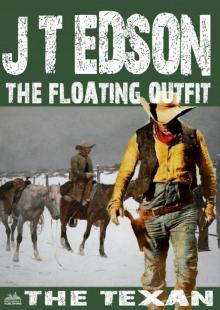 The Floating Outfit 46
The Floating Outfit 46 Dusty Fog's Civil War 11
Dusty Fog's Civil War 11 The Floating Outfit 61
The Floating Outfit 61 The Owlhoot
The Owlhoot Alvin Fog, Texas Ranger
Alvin Fog, Texas Ranger The Floating Outfit 34: To Arms! To Arms! In Dixie! (A Floating Outfit Western)
The Floating Outfit 34: To Arms! To Arms! In Dixie! (A Floating Outfit Western) The Floating Outfit 44
The Floating Outfit 44 Dusty Fog's Civil War 10
Dusty Fog's Civil War 10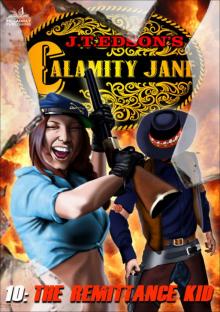 Calamity Jane 10
Calamity Jane 10 Cap Fog 4
Cap Fog 4 The Floating Outfit 51
The Floating Outfit 51 The Floating Outfit 50
The Floating Outfit 50 The Floating Outfit 49
The Floating Outfit 49 The Floating Outfit 10
The Floating Outfit 10 Apache Rampage
Apache Rampage The Floating Outfit 15
The Floating Outfit 15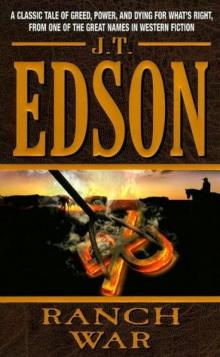 Ranch War
Ranch War The Floating Outfit 11
The Floating Outfit 11 The Devil Gun
The Devil Gun Sacrifice for the Quagga God (A Bunduki Jungle Adventure Book 3)
Sacrifice for the Quagga God (A Bunduki Jungle Adventure Book 3) Comanche (A J.T. Edson Western Book 1)
Comanche (A J.T. Edson Western Book 1) The Floating Outfit 48
The Floating Outfit 48 Wacos Debt
Wacos Debt The Rebel Spy
The Rebel Spy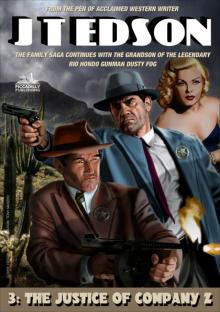 Cap Fog 3
Cap Fog 3 Trouble Trail
Trouble Trail Cold Deck, Hot Lead
Cold Deck, Hot Lead Rockabye County 4
Rockabye County 4 The Bullwhip Breed
The Bullwhip Breed Set Texas Back On Her Feet (A Floating Outfit Western Book 6)
Set Texas Back On Her Feet (A Floating Outfit Western Book 6)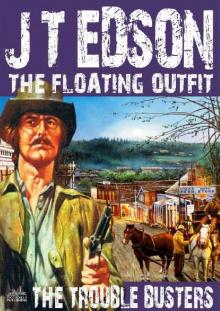 The Floating Outfit 25: The Trouble Busters (A Floating Outfit Western)
The Floating Outfit 25: The Trouble Busters (A Floating Outfit Western) Fearless Master of the Jungle (A Bunduki Jungle Adventure
Fearless Master of the Jungle (A Bunduki Jungle Adventure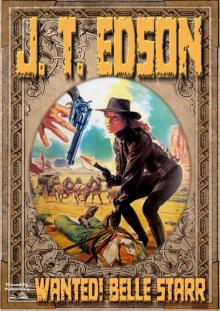 Wanted! Belle Starr!
Wanted! Belle Starr! The Big Hunt
The Big Hunt Running Irons
Running Irons The Floating Outfit 19
The Floating Outfit 19 You're in Command Now, Mr Fog
You're in Command Now, Mr Fog The Floating Outfit 27
The Floating Outfit 27 Texas Killers
Texas Killers Ole Devil and the Mule Train (An Ole Devil Western Book 3)
Ole Devil and the Mule Train (An Ole Devil Western Book 3) Bunduki and Dawn (A Bunduki Jungle Adventure Book 2)
Bunduki and Dawn (A Bunduki Jungle Adventure Book 2) The Fortune Hunters
The Fortune Hunters The Floating Outfit 12
The Floating Outfit 12 The Hide and Tallow Men (A Floating Outfit Western. Book 7)
The Hide and Tallow Men (A Floating Outfit Western. Book 7) Young Ole Devil
Young Ole Devil Slip Gun
Slip Gun The Drifter
The Drifter The Floating Outfit 45
The Floating Outfit 45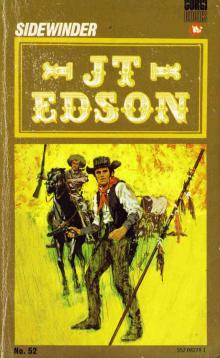 Sidewinder
Sidewinder The Ysabel Kid
The Ysabel Kid Waco 6
Waco 6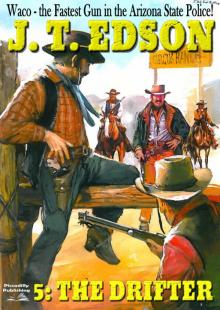 Waco 5
Waco 5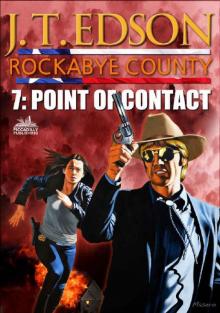 Point of Contact
Point of Contact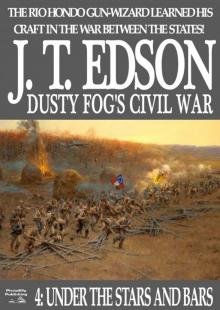 Under the Stars and Bars (A Dusty Fog Civil War Western Book 4)
Under the Stars and Bars (A Dusty Fog Civil War Western Book 4) The Floating Outfit 9
The Floating Outfit 9 Under the Stars and Bars
Under the Stars and Bars .44 Caliber Man
.44 Caliber Man The Floating Outfit 17
The Floating Outfit 17 Ole Devil at San Jacinto (Old Devil Hardin Western Book 4)
Ole Devil at San Jacinto (Old Devil Hardin Western Book 4) The Bloody Border
The Bloody Border A Horse Called Mogollon (Floating Outfit Book 3)
A Horse Called Mogollon (Floating Outfit Book 3) Waco 3
Waco 3 The Texan
The Texan The Floating Outfit 35
The Floating Outfit 35 Mississippi Raider
Mississippi Raider The Big Gun (Dusty Fog's Civil War Book 3)
The Big Gun (Dusty Fog's Civil War Book 3) Goodnight's Dream (A Floating Outfit Western Book 4)
Goodnight's Dream (A Floating Outfit Western Book 4) Waco 4
Waco 4 From Hide and Horn (A Floating Outfit Book Number 5)
From Hide and Horn (A Floating Outfit Book Number 5) The Floating Outfit 18
The Floating Outfit 18 Slaughter's Way (A J.T. Edson Western)
Slaughter's Way (A J.T. Edson Western) Dusty Fog's Civil War 7
Dusty Fog's Civil War 7 Two Miles to the Border (A J.T. Edson Western)
Two Miles to the Border (A J.T. Edson Western)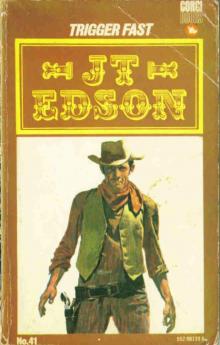 Trigger Fast
Trigger Fast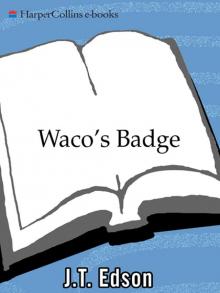 Waco's Badge
Waco's Badge A Matter of Honor (Dusty Fog Civil War Book 6)
A Matter of Honor (Dusty Fog Civil War Book 6) The Half Breed
The Half Breed Bunduki (Bunduki Series Book One)
Bunduki (Bunduki Series Book One) Kill Dusty Fog
Kill Dusty Fog Get Urrea! (An Ole Devil Hardin Western Book 5)
Get Urrea! (An Ole Devil Hardin Western Book 5) Dusty Fog's Civil War 9
Dusty Fog's Civil War 9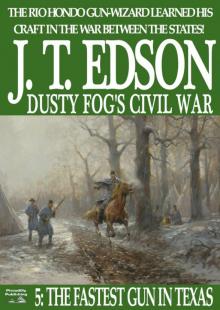 The Fastest Gun in Texas (A Dusty Fog Civil War Book 5)
The Fastest Gun in Texas (A Dusty Fog Civil War Book 5) Sagebrush Sleuth (A Waco Western #2)
Sagebrush Sleuth (A Waco Western #2) Quiet Town
Quiet Town Is-A-Man (A J.T. Edson Standalone Western)
Is-A-Man (A J.T. Edson Standalone Western) Rockabye County 5
Rockabye County 5 The Floating Outfit 14
The Floating Outfit 14 Cure the Texas Fever (A Waxahachie Smith Western--Book 3)
Cure the Texas Fever (A Waxahachie Smith Western--Book 3) The Floating Outfit 13
The Floating Outfit 13 The Road to Ratchet Creek
The Road to Ratchet Creek